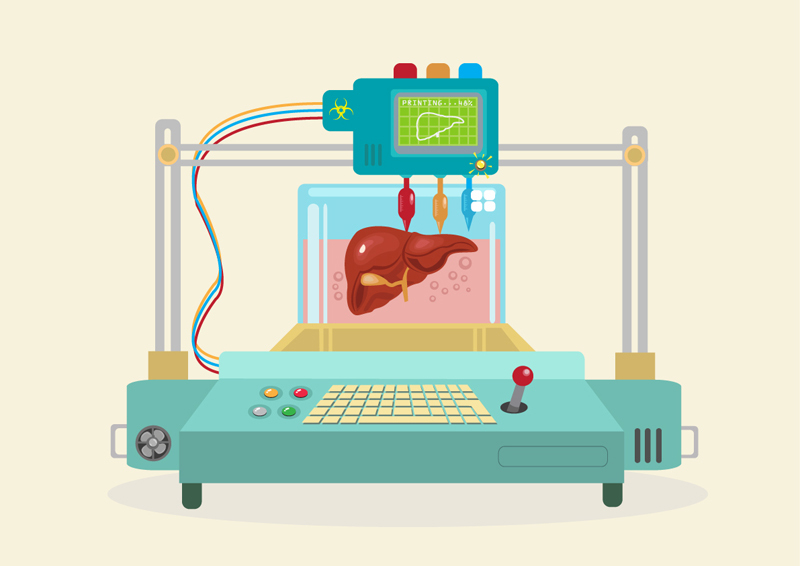Written by Philip Boucher,

3D printing refers to the production of physical artefacts by the gradual addition of layers of material. Scientists are now exploring methods of 3D bio-printing, defined here as the production of biological and ‘biologically relevant’ materials for medical and human-enhancement purposes.
The 3D bioprinting sector is often subject to optimistic predictions and exaggerated headlines. The term ‘organ printing’ was only introduced in 1999, but by 2003 Mironov et al. felt ‘safe to predict’ that they would be as widely used for biomedical research in the 21st century as the electron microscope was in the 20th century. Snappy headlines about lifesaving 3D-printed hearts and portable skin printers might attract readers, but these applications, in fact, face substantial technical barriers – not to mention regulatory, commercial and other hurdles – that will not be resolved any time soon.
Despite the hype, 3D bio-printing does offer substantial benefits in other more realistic, if less sensational, domains. This includes the production of surgical tools and instruments, such as drilling and cutting guides and knives that can be designed for specific one-off procedures, allowing surgeons to work with greater precision and speed. Anatomically accurate models of patients could also be produced, which would allow doctors to practice for a specific operation, or could be used by medical students as part of their training. The same anatomical models could also be used to facilitate discussions about procedures with patients, and might even be used to produce ‘before and after’ mock-ups of a patient’s body, which could be useful for reconstructive, therapeutic or cosmetic surgery. 3D printing also has substantial development potential in the production of prosthetic limbs. While 3D printing is not yet widely used, the level of personalisation it allows could bring improvements in their functionality, aesthetics and fit, this last being a crucial factor in their success.
It is difficult to estimate which medical uses of 3D printing will break through, but some applications can develop extremely quickly. For example, all US manufacturers of hearing aids shifted to 3D printing in less than two years, with late adopters pushed out of the market. Such anecdotes provide no guarantees, but illustrate the potential game-changing power of 3D printing for ‘mass customised’ and biologically relevant products.
This week, STOA published the results of its study on 3D bio-printing for medical and enhancement purposes. The study was requested by Dario Tamburrano (EFDD, Italy), and carried out by the European Technology Assessment Group (ETAG), under the management of STOA. The study followed STOA’s foresight methodology, which starts with the identification of broad trends and their potential impacts, before moving on to the development of scenarios to support the exploration of possible futures and, finally, back to the present day with reflections on how to prepare for and shape the future. Three key challenges are identified in the approach to regulation, in managing the distribution of costs and benefits, and in the role of citizens in technology development. The study offers two distinct sets of policy options in response to each of these three challenges.
The whole study is described in detail in a report, which is augmented by a further analysis of legal and ethical issues. The key insights of the study are summarised and developed in an In-Depth Analysis, which offers concluding remarks on three key trends (the decentralisation of supply chains, mass customisation of devices, and the rise of ‘maker movements’ operating outside traditional laboratories), the ambiguous boundary between medical recovery and human enhancement, responsible research and innovation, managing expectations of the technology, and how to develop socially acceptable technologies.
Your opinion counts for us. To let us know what you think, get in touch via email.
Read the In-Depth Analysis on ‘3D bio-printing for medical and enhancement purposes‘ on the Think Tank pages of the European Parliament.








Be the first to write a comment.